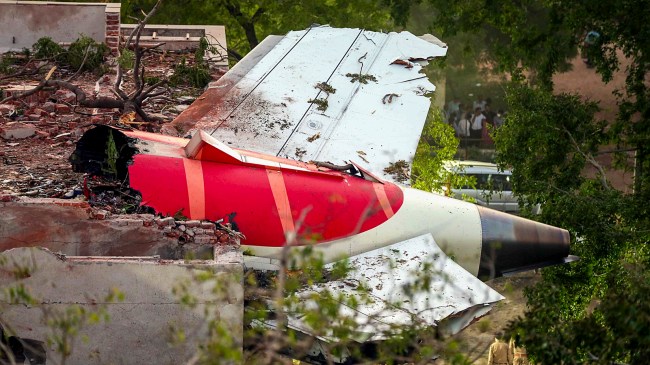Opinion Before Air India crash report comes, we must look into the new aviation rules
The Draft Rules replace the Aircraft (Demolition of obstructions caused by Buildings and Trees, etc.) Rules, 1994, which were also formulated to address the issue of obstruction in aerodrome areas
 Remains of the Air India plane that crashed moments after taking off from the Ahmedabad airport (Photo: PTI)
Remains of the Air India plane that crashed moments after taking off from the Ahmedabad airport (Photo: PTI) Written by Lakshita Handa and Pragya Singh
In light of the tragic flight crash in Ahmedabad earlier last month – the Air India crash report is about to come — the issue of infrastructural safety in and around airports has once again been brought to the fore. While the crash has raised larger questions of aeroplane safety protocol and technical compliance, it serves as an important reminder to decongest and remove physical obstructions near airports.
In light of this, the Civil Aviation Ministry has put out the Aircraft (Demolition of Obstructions Caused by Buildings and Trees, etc.) Rules, 2025, in the public domain for comments. These Draft Rules, notified on June 18, 2025, under the Bharatiya Vayuyan Adhiniyam, 2024 (2024 Act), are currently open to public comments for a 21-day period.
How are the new rules different?
Notably, the Draft Rules replace the Aircraft (Demolition of obstructions caused by Buildings and Trees, etc.) Rules, 1994 (1994 Rules), which were also formulated to address the issue of obstruction in aerodrome areas. The 1994 Rules empowered a Joint Director General or a Deputy Director General of Civil Aviation to order the demolition of a building or the cutting of a tree, particularly where such a building or tree exceeded the stipulated height. The 1994 Rules allowed an aggrieved person, affected by such an order, to make an appeal to the Director General of Civil Aviation, whilst placing an obligation on the concerned person to comply with the order within a 60-day period. They also stated that in the event of a failure to comply with the order, the requisite action could be carried out by the District Collector.
In contrast to the 1994 Rules, the Draft Rules enable authorities to take prompt action against buildings or structures that exceed the prescribed height in designated aerodrome zones. This includes empowering officers with the legal authority to issue notices, conduct physical on-site verifications during daylight hours and escalate non-compliant structures for demolition. Under the Rules, owners notified to modify or demolish their structures will be required to submit structural details within 60 days. Where such a building, tree or structure is found to violate safety norms, the Director General of Civil Aviation may order its demolition, trimming or reduction in height. All in all, the process will mirror the process used for removing unauthorised constructions.
It is further clarified that compensation under Section 22 of the 2024 Act will only be available to those who comply with official orders. However, any unauthorised structures constructed after the notification date will not be entitled to such compensation.
Despite the significant impact that such Draft Rules will have on the infrastructure surrounding the airports across the country, they do not factor in guidelines pertaining to due process, notice and show cause laid down by the Supreme Court of India in In Re: Directions in the matter of demolition of structures. The short period of 21 days for receiving public comments on the Draft Rules also signifies a reactive tilt to the policy-making process.
What are the next steps for the Aviation Ministry?
The US President’s Commission on Aviation Security and Terrorism, in their 1990 report, harshly criticised the Federal Aviation Administration for being “far too reactive to problems instead of anticipating them”. The field of civil aviation is particularly susceptible to a model of regulation driven by crises. However, any regulation in this field has the capacity to affect human lives on a massive scale, as well as have enormous economic repercussions for the State.
Civil aviation policies should be drafted based on meticulous research and be adaptable. Factors such as risk and safety management, technological advancements, sustainability, public health, security and international standards should be accounted for in the policy-making process. As these policies have a considerable impact on the public, thorough public consultation at various stages of drafting should be undertaken to maintain transparency. Lastly, the policies should have resilience as their core metric to ensure that the laws and regulations drafted not only address the issues based on the evidence of the past but can also be future-facing and dynamic. Whatever the Air India crash report might indicate, this should be the objective.
The authors are Senior Resident Fellows at the Vidhi Centre for Legal Policy. Views are personal





